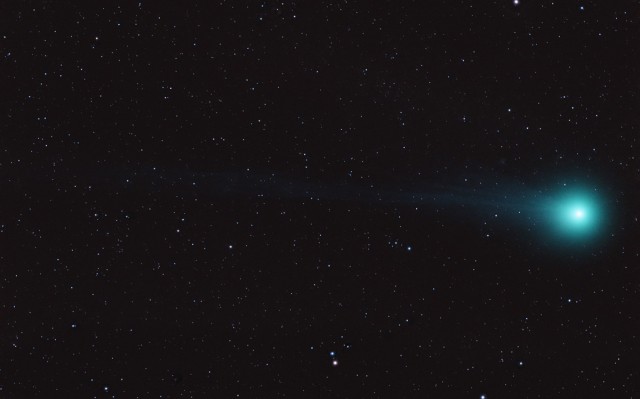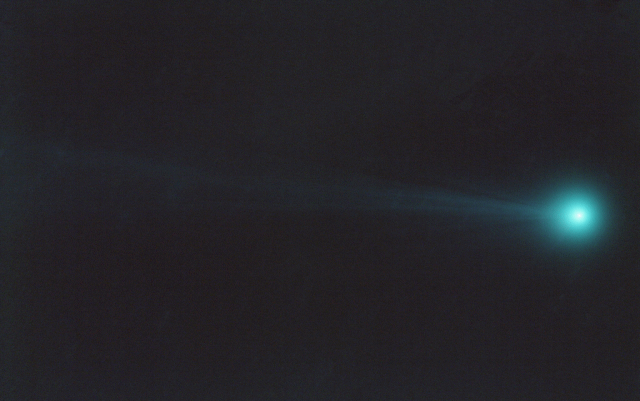

My prediction that the tail of Comet Lovejoy would display a structure seen 9 days before the date of this image has failed. There is no resemblance to the appearance of the comet from 9 days before and the comet actually exhibits features I have not seen before.
Very strong moonlight hindered getting good images. The moon was just past first quarter and was right below the comet. I guess I’m lucky to get what I got. I’m still investigating the rotation aspect of the tail structures and why it appears to take 9 days to complete one revolution.
